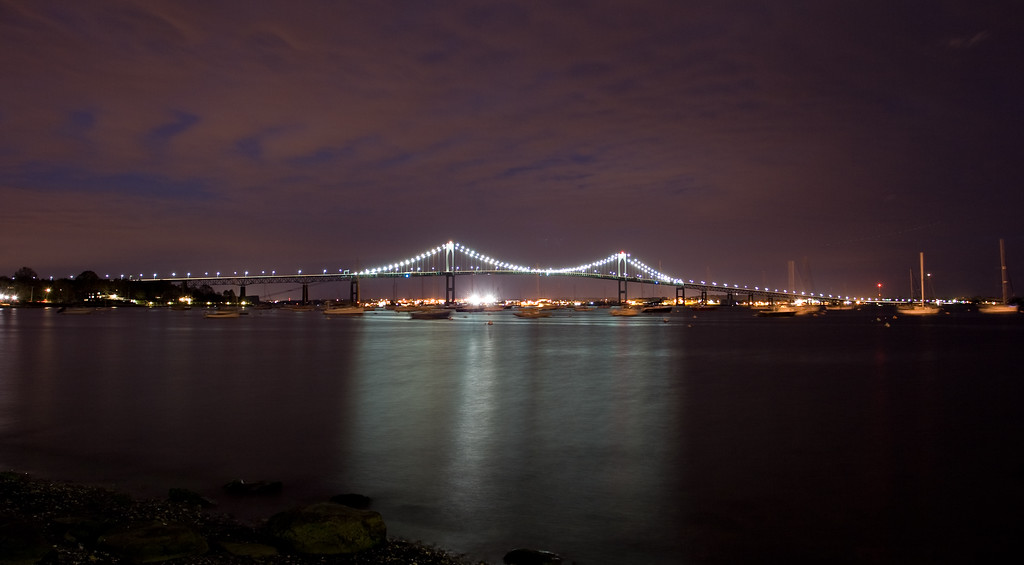Shot some long exposures last night. When I looked at the JPEG photos on the computer I could see a few red dots (and a few green ones and blue ones) visible against the dark sky. The dots were in the same X-Y coordinates of every photo. RGB made me think Bayer filter and blown pixels. Quick web search shows slightly varying ideas, but mostly the same theme...probably stuck or hot pixels, expecially since I was shooting 30-second exposures.
I shoot in JPEG+RAW. When I opened the RAW files in PSE7, as usual the photo opened up in the RAW editor. I noticed the red/greeen/blue dots would be there for about a second, and then boom...gone. It's like PSE knows what they are and immediately gets rid of them ("paints" them the color of the adjacent pixels). When I toggle between two RAW pictures in the RAW editor, the colored dots always show up again at first, but then go away again. I was expecting to have to brush these dots away, but PSE did it automatically.
Below are the two photos (JPEG and RAW). You can see the red dot in the first photo. From the left edge of the photo, count to the 4th street light on the bridge. Then travel straight up until you hit blue sky. That's where the red dot is. Notice it's gone on the bottom photo. The top photo is unedited in PSE. The bottom image was sharpened, straightened, and cropped, that's all. There's also a blue dot at the very top of the top image, about 2/3 from the left, but that dot was cropped out of the bottom image, so there's no comparison available for that one. There are probably others, it's kind of Where's Waldo. Anyway, if you're shooting long exposures, keep your eyes open for these little dudes.
JPEG image

RAW image

I shoot in JPEG+RAW. When I opened the RAW files in PSE7, as usual the photo opened up in the RAW editor. I noticed the red/greeen/blue dots would be there for about a second, and then boom...gone. It's like PSE knows what they are and immediately gets rid of them ("paints" them the color of the adjacent pixels). When I toggle between two RAW pictures in the RAW editor, the colored dots always show up again at first, but then go away again. I was expecting to have to brush these dots away, but PSE did it automatically.
Below are the two photos (JPEG and RAW). You can see the red dot in the first photo. From the left edge of the photo, count to the 4th street light on the bridge. Then travel straight up until you hit blue sky. That's where the red dot is. Notice it's gone on the bottom photo. The top photo is unedited in PSE. The bottom image was sharpened, straightened, and cropped, that's all. There's also a blue dot at the very top of the top image, about 2/3 from the left, but that dot was cropped out of the bottom image, so there's no comparison available for that one. There are probably others, it's kind of Where's Waldo. Anyway, if you're shooting long exposures, keep your eyes open for these little dudes.
JPEG image

RAW image

Last edited:
